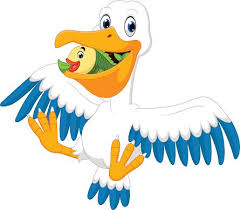Souvenir Sheet: Pelecanus conspicillatus (Mozambique 2017)
Pelecanus conspicillatus (Mozambique 2017)
10 February (Mozambique ) within release Sea birds goes into circulation Souvenir Sheet Pelecanus conspicillatus face value 350 Mozambican metical
| Souvenir Sheet Pelecanus conspicillatus in catalogues | |
|---|---|
| Colnect codes: | Col: MZ 2017-40 |
Souvenir Sheet is square format.
Although this issue was authorized by the postal administration of Mozambique, the issue was not placed on sale in Mozambique, and was only distributed to the new issue trade by Mozambique's philatelic agent.Also in the issue Sea birds:
- Stamp - Sula variegata face value 100;
- Souvenir Sheet - Pelecanus conspicillatus face value 350;
- Souvenir Sheet - Sea birds face value 4*100;
- Stamp - Phalacrocorax urile face value 100;
- Stamp - Eudyptes chrysocome face value 100;
- Stamp - Alca torda face value 100;
|
Data entry completed
50%
|
|
|---|---|
| Souvenir Sheet Pelecanus conspicillatus in digits | |
| Country: | Mozambique |
| Date: | 2017-02-10 |
| Emission: | Commemorative |
| Format: | Souvenir Sheet |
| Face Value: | 350 Mozambican metical |
Souvenir Sheet Pelecanus conspicillatus it reflects the thematic directions:
Animals are multicellular, eukaryotic organisms of the kingdom Animalia (also called Metazoa). All animals are motile, meaning they can move spontaneously and independently, at some point in their lives. Their body plan eventually becomes fixed as they develop, although some undergo a process of metamorphosis later on in their lives. All animals are heterotrophs: they must ingest other organisms or their products for sustenance.
Birds (Aves), a subgroup of Reptiles, are the last living examples of Dinosaurs. They are a group of endothermic vertebrates, characterised by feathers, toothless beaked jaws, the laying of hard-shelled eggs, a high metabolic rate, a four-chambered heart, and a strong yet lightweight skeleton. Birds live worldwide and range in size from the 5 cm (2 in) bee hummingbird to the 2.75 m (9 ft) ostrich. They rank as the class of tetrapods with the most living species, at approximately ten thousand, with more than half of these being passerines, sometimes known as perching birds. Birds are the closest living relatives of crocodilians.
Pelicans (genus Pelecanus) are a genus of large water birds that make up the family Pelecanidae. They are characterized by a long beak and a large throat pouch used for catching prey and draining water from the scooped-up contents before swallowing. They have predominantly pale plumage, except for the brown and Peruvian pelicans. The bills, pouches, and bare facial skin of all pelicans become brightly coloured before the breeding season.



